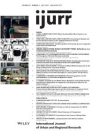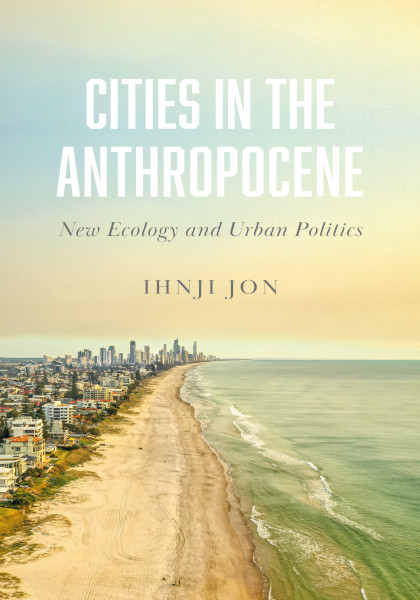In Cities in the Anthropocene Ihnji Jon makes the case that the city level is the ideal scale for enacting positive environmental action. Underpinned by extensive interviews in Tulsa (Oklahoma, USA), Darwin (Northern Territory, Australia), Cleveland (Ohio, USA) and Cape Town (South Africa), Jon argues that cities are frontiers where we can tap into how ‘nature’ permeates everyday life to forge and enact a collective agenda for change.
As its title suggests, the book principally contributes to ‘new ecology’, sometimes labelled posthumanist or affirmative ecopolitics. New ecology rejects the nature/society and human/non-human dichotomies of traditional ecology, arguing that they are inseparably entangled. It encourages a focus on instability, consideration for non-human agency, and sensitivity to the immediate surroundings. Ironically, the ‘new’ ecology label is already quite old, having its roots in the 1980s, gaining traction in geography and urban studies in the 1990s, with its concerns ultimately filtering into the likes of political ecology and more-than-human approaches. In the proposed epoch of the Anthropocene—a human-dominated time period characterized by a deep entwinement of humans and the environment and the crossing of planetary boundaries—Jon’s reinvigoration of the term ‘new ecology’ is apt, drawing on the recent new materialist, more-than-human and posthumanist thinking of the likes of Haraway, Tsing and Latour.
The book also engages with the politics of scale literature, which broadly refers to contestations ‘about’ scales—what they mean or represent, their reach and nature, what happens in them, what they relate to, and what they exclude. Jon notes a slowing of this literature, attributed to a ‘failure to accommodate the rising needs for a more affirmative conceptualisation of scale’ (pp. 9–10). My feeling is that this is only part of the story, and that scholars have increasingly tended to drop scale in favour of networks, assemblages and relations. Nonetheless, Jon observes a conspicuous absence of more progressive approaches to envisioning scales. This underpins the book’s key contribution, drawing on the new ecology literature to argue how the city scale can be utilized in response to the Anthropocene. Jon advocates using this scale based on the interplay between (1) cities’ physical ‘graspability’—meaning they are small enough to tap into the everyday experiences of the Anthropocene that motivate action; (2) their complexity—they are large enough to observe complex relations and the processes driving change; and (3) their intensity—their actions could be deeply influential, both within and beyond the city’s boundaries.
This argument unfolds over six chapters. The first problematizes ‘green only’ approaches to environmentalism, posing the question of how we can integrate pro-environmental action into all aspects of life. The second chapter reviews the politics of scale and new ecology literature, making the case for an affirmative, action-oriented focus on the city scale. The middle of the book serves as an empirical punctuation, with the third chapter, on Darwin and Tulsa, discussing how environmental initiatives can be communicated without appeals to environmentalism by tapping into other ideologies and interests. The fourth chapter, on Cleveland and Cape Town, questions how the green agenda can be united with concerns about inequality, making the case that the local scale is where socio-economic concerns can be most effectively negotiated. The fifth chapter, in turn, draws on DeLanda and Deleuze to outline how the complexity of cities is an advantage in furthering environmental politics. The conclusion reveals Jon’s motivation, striking an optimistic note:
I am concerned at how often and automatically we are sure that the extractive logics of a capitalist system will run us over … I have tried to express how we can be hopeful and imaginative … by highlighting the agency of environmental activists, urban planners, and other government officials who strive to deliver something positive (pp. 148–9).
By uniting the right ideas and agencies at the city scale, pro-environmental change can be realized whilst catering to pluralism. Although Jon’s examples highlight how this can happen, I hesitate to share her optimism, given the rate and magnitude of action required to mitigate climate change. There is now an extremely limited global carbon budget available to help us remain within safer levels of warming, with a minority elite overwhelmingly responsible for its depletion. I therefore find there is a need for radical, urgent and top-down change, especially at the frontiers where pragmatic common objectives are unlikely or impossible to achieve (e.g. decarbonizing aviation). However, this book is not about climate change but the Anthropocene, and those attempting to steer away from other planetary boundaries could be well served by heeding its recommendations.
Throughout I was willing the book to engage more explicitly with the Anthropocene. It did so tantalizingly in places—‘the Anthropocene forces us to reflect on the fragility of our planet […to consider] what can be done’ (p. 62)—along with a wider reflection on ‘Anthropocene moments’ that are tangibly felt in cities, but it was taken more as a given elsewhere. This begs the question: would the author’s argument be affected if the concept did not become as popular as climate change, for instance?
Jon’s defence of scale—which is part of our collective common-sense and hence still relevant (as I have previously argued)—is very welcome. Scale was subjected to extensive debate in human geography and urban studies in the early 2000s, as scholars questioned whether scale was ontological (a fundamental building block of the world), epistemological (a way of thinking about the world), or simply a distraction that should be disregarded. While some still utilize scale, many shun it entirely in favour of ‘flat’ ontologies inspired by the likes of Deleuze and Latour. Jon certainly draws heavily on both thinkers, but she uses them in a novel way to advance more of an epistemological approach to defend the relevance of the city scale. This is an intriguing and significant contribution, though not one that the book itself narrates.
In short, this timely book convincingly makes the case for how cities can deliver pro-environmental action in the Anthropocene whilst making some key theoretical contributions to the new ecology and politics of scale literatures. It is essential reading for anyone thinking about the role of cities in the Anthropocene and relevant to those working within urban studies, environmental and urban geography, planning, political ecology, and environmental governance.
Joe Blakey, is an an Environmental and Political Geographer at the University of Manchester, whose work focuses on examining the political, economic, and social challenges of human-environment relations and post-carbon futures.
Ihnji Jon. Cities in the Anthropocene: New Ecology and Urban Politics. London: Pluto Press, © 2021. Cover used with permission.
Views expressed in this section are independent and do not represent the opinion of the editors.

